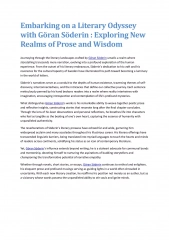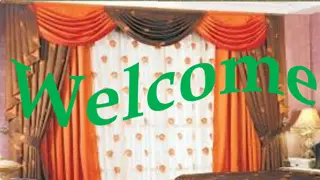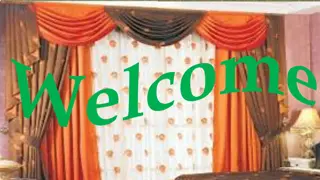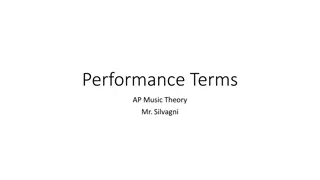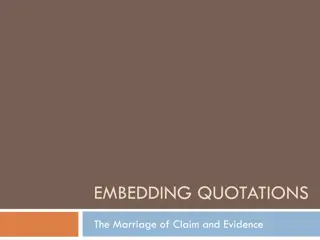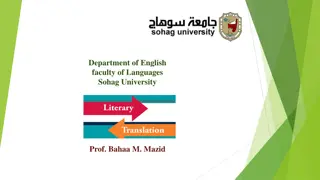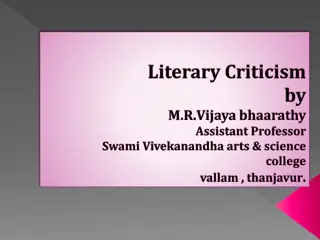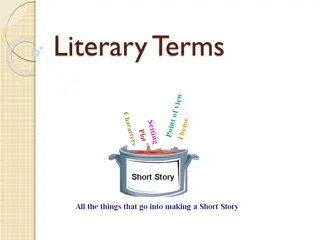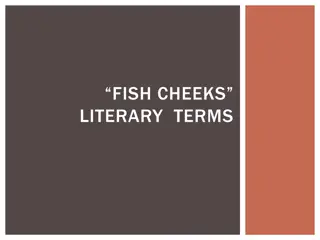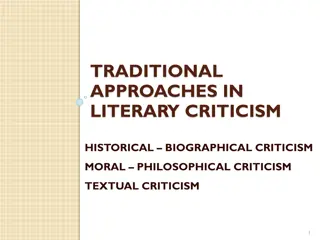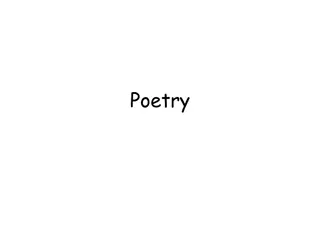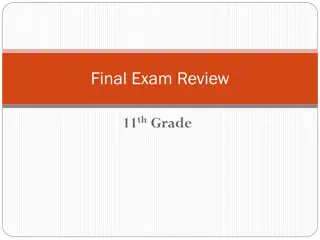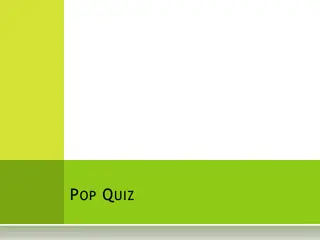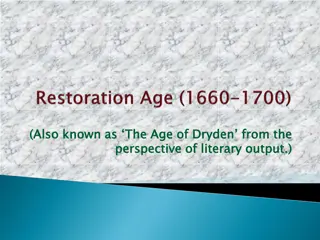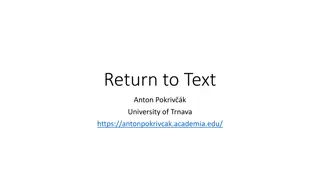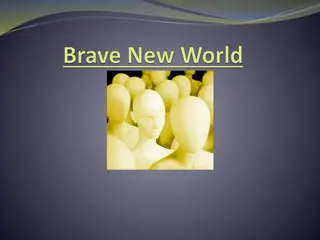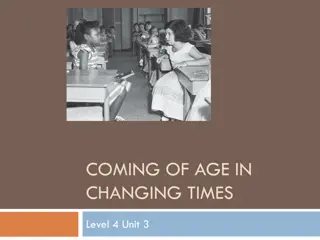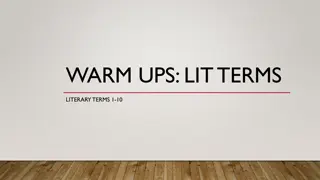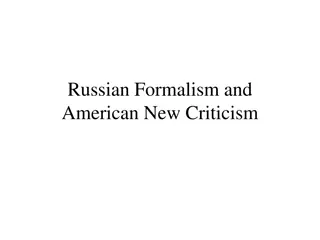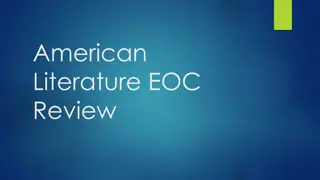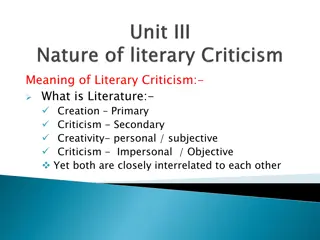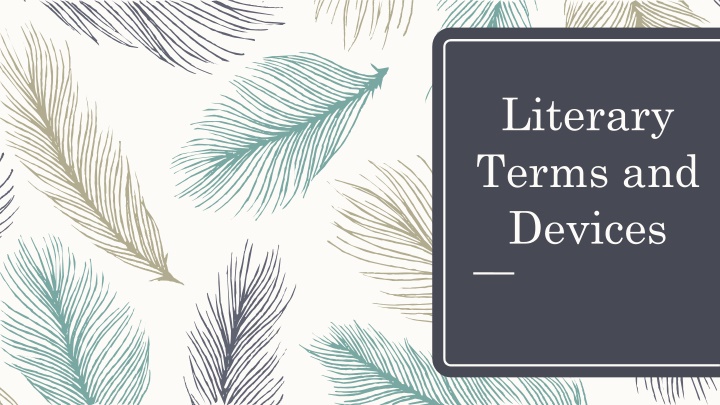
Literary Terms and Devices: Understanding Elements of Literature
Explore key literary terms and devices, including main idea, theme, setting, genre, plot elements like exposition, rising action, climax, falling action, and resolution, along with character analysis and plot diagrams. Enhance your understanding of literature with examples and definitions provided.
Download Presentation

Please find below an Image/Link to download the presentation.
The content on the website is provided AS IS for your information and personal use only. It may not be sold, licensed, or shared on other websites without obtaining consent from the author. If you encounter any issues during the download, it is possible that the publisher has removed the file from their server.
You are allowed to download the files provided on this website for personal or commercial use, subject to the condition that they are used lawfully. All files are the property of their respective owners.
The content on the website is provided AS IS for your information and personal use only. It may not be sold, licensed, or shared on other websites without obtaining consent from the author.
E N D
Presentation Transcript
Literary Terms and Devices
Main Idea Definition: What a piece of writing is mostly about
Summary Definition: gives the main idea and important details of a literary piece
Theme Definition: a central message, idea, or concern that is expressed in a literary piece
Setting Definition: the time and location of the events described in a literary piece
Genre Definition: a classification of literature such as: horror, non- fiction, fiction, drama, sci-fi, fantasy, romance, action and adventure, mystery or comedy
Narrator Definition: the person or creature who is telling the story Example: Katniss from The Hunger Games
Plot Definition: the sequence of events in a literary piece
Exposition Establishes the characters, setting and situation/conflict of a story
Rising Action Builds suspense in the story Protagonist faces antagonist/conflict but fails
Climax The turning point of a story Where the protagonist faces the antagonist/conflict for the final time
Falling Action Shows the final results from the climax Story starts to wrap up
Resolution The ending of the story
Character Definition: a person or other creature in a literary piece Example: Katniss Everdeen or Peeta Mellark in The Hunger Games.
Conflict Definition: a problem or struggle between a character and a force: Character vs. Character Character vs. Self Character vs. Nature Character vs. Society/Group Character vs. Fate Character vs. Machine
Flashback Definition: a section in a literary piece that interrupts the sequence of events in order to relate an earlier incident or set of events
My Example When was an exciting time in your life?
Foreshadow Definition: An author s use of hints or clues to give a reader an idea of what may happen next in a literary piece Example: A pipe is going to burst, but before is does, the author writes a scene where the family notices a small dark spot on the ceiling but ignores it.
Point of View Definition: The perspective in which a literary piece is told
First Person What are the subject pronouns? I We
Your Chart Should Look Like This... Point of View First Person Second Person Third Person Objective Third Person Limited Third Person Omniscient -I/We Characteristics
Characteristics The narrator is someone in the story: usually the main character or someone close to the main character.
Your Chart Should Look Like This... Point of View First Person Second Person Third Person Objective Third Person Limited Third Person Omniscient -I/We -Narrator is in the story: usually main character/ someone close to main character. Characteristics
Second Person What are the subject pronouns? You
Your Chart Should Look Like This... Point of View First Person Second Person Third Person Objective Third Person Limited Third Person Omniscient -I/We -Narrator is in the story: usually main character/ someone close to main character. -You Characteristics
Characteristics The narrator talks directly to the reader or someone (protagonist). Usually used for instructional use.
Your Chart Should Look Like This... Point of View First Person Second Person Third Person Objective Third Person Limited Third Person Omniscient -I/We -Narrator is in the story: usually main character/ someone close to main character. -You -The narrator talks directly to the reader -Usually used for instructional use Characteristics
Third Person What are the subject pronouns? He She It They
Your Chart Should Look Like This... Point of View First Person Second Person Third Person Objective Third Person Limited Third Person Omniscient -I/We -Narrator is in the story: usually main character/ someone close to main character. -You -The narrator talks directly to the reader -Usually used for instructional use He/She/It/They He/She/It/They He/She/It/They Characteristics
Third Person Objective The narrator can only relay to the reader what is seen or heard.
Your Chart Should Look Like This... Point of View First Person Second Person Third Person Objective Third Person Limited Third Person Omniscient -I/We -Narrator is in the story: usually main character/ someone close to main character. -You -The narrator talks directly to the reader -Usually used for instructional use He/She/It/They He/She/It/They He/She/It/They -The narrator can only relay to the reader what is seen or heard. Characteristics
Third Person Limited The narrator is able to see in the mind of a single character (thoughts and feelings).
Your Chart Should Look Like This... Point of View First Person Second Person Third Person Objective Third Person Limited Third Person Omniscient -I/We -Narrator is in the story: usually main character/ someone close to main character. -You -The narrator talks directly to the reader -Usually used for instructional use He/She/It/They He/She/It/They He/She/It/They -The narrator can only relay to the reader what is seen or heard. -The narrator can see in a single character s mind: thoughts and feelings. Characteristics
Third Person Omniscient The narrator knows everything: all thoughts, feelings, actions of characters and can be shared with reader.
Your Chart Should Look Like This... Point of View First Person Second Person Third Person Objective Third Person Limited Third Person Omniscient -I/We -Narrator is in the story: usually main character/ someone close to main character. -You -The narrator talks directly to the reader -Usually used for instructional use He/She/It/They He/She/It/They He/She/It/They -The narrator can only relay to the reader what is seen or heard. -The narrator can see in a single character s mind: thoughts and feelings. -The narrator knows everything: thoughts, feelings, characters actions and can share with reader. Characteristics
Tone Definition: the attitude of an author toward the subject that he/she is writing about Example: The old man s face looked so peaceful after death that he seemed like he was in a deep sleep.
Mood Definition: the atmosphere or feeling an author creates within the piece of writing Example: The room was somber as the family members wiped their eyes and bid farewell to Grandfather Len.
Alliteration Definition: two or more words in a row that start with the same sounds Example: Penelope puts pepperoni on her pizza.
Simile Definition: a figure of speech that compares two unlike things using like or as Example: The teacher was as mean as a witch.
Metaphor Definition: a figure of speech that compares two things that are not alike but have something in common without using like or as Example: The classroom was a zoo.
Onomatopoeia Definition: a word or phrase that mimics the sound of an object or action it refers to: animal noises, people noises, or other noises. Example: Moo, Yikes! Or Choo Choo!
Personification Definition: giving human characteristics to non human things (Animals/Objects/Weather) Example: The waffle jumped out of the toaster.
Hyperbole Definition: the use of extreme exaggeration, usually with humor Example: My backpack weighs a ton.
Imagery Definition: the use of vivid description to create a picture in the reader's mind Think: the five senses Example: The fresh and juicy orange is very cold and sweet
Denotation Definition: the dictionary definition of the word; the literal meaning Example: Snake meaning a reptile
Connotation Example: Snake meaning someone that can't be trusted Definition: the extra sense that the word implies
Allusion Example: He's such a Romeo, always around girls! (Romeo and Juliet = Shakespeare) Definition: a reference to a well known work of literature, art, music, etc.
Allusion Instructions Color the beaker, then identify the allusions in the beaker Write down under the flap: Isaac Newton is famous for his Laws of Motion Albert Einstein is a famous Physicist
Oxymoron Definition: the close placement of words having opposite or near opposite meanings in order to create a unique description Example: Clearly confused or pretty ugly

